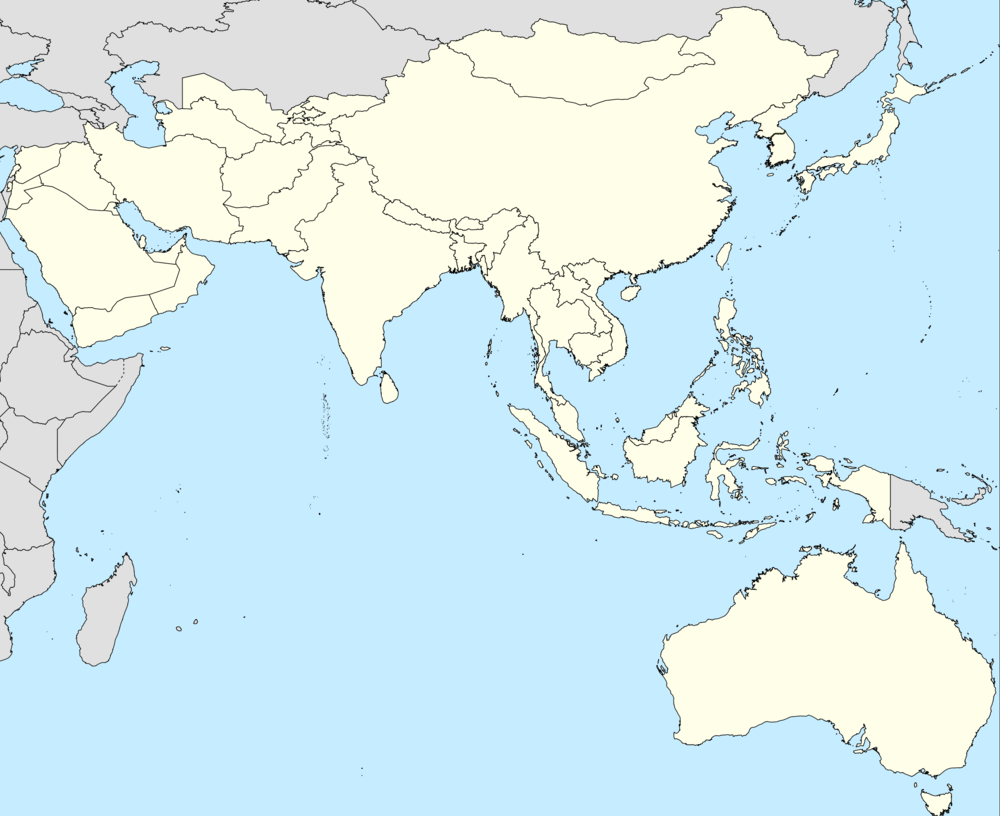FESPIC Games
The FESPIC Games[1] or the Far East and South Pacific Games for the Disabled, was a multi-sports games in Asia and the South Pacific region which is considered to be a precursor to the Asian Para Games, as two of its' edition games in 1999 (7th) and 2002 (8th) were held parallel to the 1998 Asian Games and the 2002 Asian Games.
| Motto | Overcoming Challenges, Inspiring Others |
|---|---|
| First event | 1975 |
| Occur every | Four years |
| Last event | 2006 FESPIC Games in Kuala Lumpur |
| Purpose | Multi-sport event for disable of the Asia-Pacific Region |
| Headquarters | Japan |
| APC President | Dr. Kazuo Hatada |
| Website | FESPIC Federation |
The FESPIC Games, which started in 1975, was held nine times.[2] The games were last contested in December 2006, in Kuala Lumpur, Malaysia.[3]
For Asian countries, the FESPIC Games was replaced by the Asian Para Games starting with the inaugural 1st Asian Para Games in 2010 in Guangzhou, China after the 16th Asian Games. For the Pacific countries, the para sports were included in the Pacific Games programme. The Asian Para Games, the parallel event for athletes with physical disabilities, is a multi-sport event held every four years after every Asian Games. The Asian Games and Asian Para Games had adopted the strategy used by the Olympic and Paralympic Games of having both games in the same city.
Objectives
- To promote general interest and welfare for the disabled in the region through participation in sports events and other activities
- To deepen mutual understanding and friendship of the disabled
- To promote rehabilitation for the disabled in the region through sports activities
History
The first FESPIC Games was held in Oita, Japan in 1975. There were limited opportunities for persons with disabilities in Asia and the Pacific to participate in sports at the time. The FESPIC Games was launched to address this issue and promote understanding toward disabled persons in each country, as well as improve their social welfare.
The number of participant countries increased during FESPIC history. Central Asian countries Kazakhstan, Uzbekistan, Kyrgyzstan, Turkmenistan and Tajikistan, as well as Armenia and Azerbaijan, first participated in the 7th FESPIC Games in 1999. The Middle Eastern countries were allowed to compete in the 9th FESPIC Games in 2006, along with Timor-Leste. Middle East countries were previously not allowed to compete in FESPIC Games from 1975 to 2002 because these countries were Africa/Middle Eastern members.
List of FESPIC Games
Of all the nine edition of the FESPIC Games, two of them, the 1999 and 2002 editions were held in the same host city as the Asian Games. The 9th FESPIC Games was the last and final edition of the series which took place in 2006.[4] For Asian countries, the FESPIC Games was replaced by the Asian Para Games, starting with the inaugural 2010 Asian Para Games which was held in Guangzhou, China after the 16th Asian Games.
| Edition | Year | Host City | Host Nation | Start Date | End Date | Nations | Competitors |
|---|---|---|---|---|---|---|---|
| I | 1975 | Oita | 1 June | 3 June | 18 | 973 | |
| II | 1977 | Parramatta | 20 November | 26 November | 16 | 430 | |
| III | 1982 | Sha Tin | 31 October | 7 November | 23 | 744 | |
| IV | 1986 | Solo | 31 August | 7 September | 19 | 834 | |
| V | 1989 | Kobe | 15 September | 20 September | 41 | 1,646 | |
| VI | 1994 | Beijing | 4 September | 10 September | 42 | 2,081 | |
| VII | 1999 | Bangkok | 10 January | 16 January | 34 | 2,258 | |
| VIII | 2002 | Busan | 26 October | 1 November | 40 | 2,199 | |
| IX | 2006 | Kuala Lumpur | 25 November | 1 December | 46 | 3,641 |
Sports
Target Sports
Water Sports
|
Ball Sports
|
See also
- Asian Games
- Asian Para Games
- Disabled sport
- International Paralympic Committee
References
- "What is FESPIC Games?". Archived from the original on 2008-06-22. Retrieved 2009-04-30.
- Closure of FESPIC Federation Archived June 19, 2006, at the Wayback Machine
- 9th Far East and South Pacific Games for the Disabled (FESPIC) Games
- FESPIC closure notice
External links
- The official website of 7th FESPIC Games
- The official website of 8th FESPIC Games
- The official website of 9th FESPIC Games
- 2010 Asian Games Guangzhou Official Website
- Dumapong wins silver in Busan FESPIC
- International Association for Disabled Sailing (IFDS)
- International Paralympic Committee
- Cerebral Palsy International Sport and Recreation Association
- International Blind Sports Association
- INAS-FID: International Sports Federation for Persons with Intellectual Disability
- International Wheelchair and Amputee Sports Federation
- Discussion forum of Disabled sports
- 9th FESPIC Games Past Medal Tally of the FESPIC Games 1999–2006
- International Games (FESPIC Youth Games)
- International Games (FESPIC Games)
